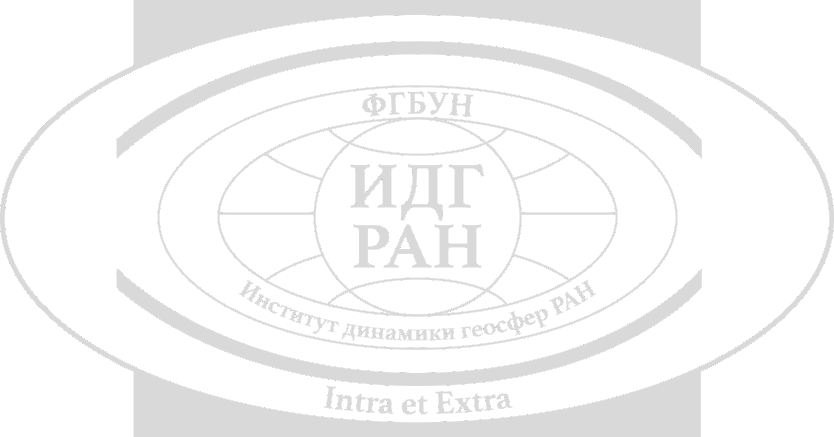Adaptive optics for wavefront correction in high-power laser complexes
Abstract
One of the problems of modern high-power pulsed laser systems is the very low quality of the output radiation, which significantly reduces the focusing efficiency. This is due to the occurrence of aberrations in the active elements of lasers and their change during the generation of light pulses. Moreover, an increase in the power of the generated laser pulses is not always possible due to the limited radiation resistance of the optical elements used in the resonators. To increase the contrast of the pulse and increase the intensity of the focal spot, the transition to the second harmonic is sometimes used. However, due to the nonlinearity of the second harmonic generation process, additional nonlinear distortions appear in the wavefront of the laser radiation, which also reduce the focusing efficiency.
Existing pulsed solid-state laser systems, such as the National Ignition Facility (NIF) in the USA, MEGAJOULE (LMG) in France, SHENGUAN III in China, LFEX in Japan, UVL2 in Sarov and PEARL in Nizhny Novgorod, allow generating nanosecond pulses with energy up to 10 kJ and are used to study the interaction of high-power radiation with matter. However, in view of the problems indicated above, large and small-scale phase distortions with significant amplitudes appear in the wavefront of the emerging beam. This does not allow focusing the radiation on the target to a diffraction limited spot, and, as a result, to achieve the required power density at the object for research.
The only way to improve the quality of radiation and increase the focusing efficiency is to use elements and systems of adaptive optics, as was shown back in 2000 (H. Baumhacker, KJWitte, H. Stehbeck, A. Kudryashov, V. Samarkin, "Use of deformable mirror in the 8-TW TiS-laser ATLAS ", Proc. 2nd Int. Workshop on Adaptive Optics for Industry and Medicine, 12-16 July 1999, Durham, England, Ed. G. Love, pp. 28-31, World Scientific, 2000). Therefore, all modern multi-terawatt and petawatt power laser systems are equipped with adaptive systems.
The authors of the project are actively collaborating with researchers from the Nizhny Novgorod region, with the Institute of Applied Physics of the Russian Academy of Sciences and the All-Russian Scientific Research Institute of Experimental Physics (RFNC-VNNIEF). As a result of joint work, serious shortcomings of the existing adaptive systems for correcting nonlinear phase distortions were identified, the solution of which has not yet been demonstrated despite the fact that work in this direction is carried out in many laboratories.
As part of the project, we propose to conduct numerical and experimental studies and develop elements of an adaptive optical wavefront correction system in pulsed lasers of a petawatt power level. For this, a new wide-aperture deformable bimorph type mirror with dimensions of more than 300 × 300 mm will be developed. To effectively mount such a mirror and increase the temporary stability of the surface profile, an active mount with tangential and radial piezoceramic actuators designed to compensate for the mechanical and thermal deformations of the mirror will be developed. In order to eliminate the identified shortcomings of the classical algorithm used in the Shack-Hartmann sensor, an algorithm will be developed that adaptively changes the mask of the microlens raster depending on the geometry of the electrodes of the deformable mirror. To solve the problem of incorrect conjugation of the measured aberration plane with the plane of the adaptive mirror, the wavefront sensor and the focusing element (parabolic mirror), as well as to solve the serious problem of determining the reference wavefront, the adaptive system control algorithm will be modified - it is necessary to analyze the information from the wavefront sensor, and from the focal spot intensity distribution sensor in the focal plane. A successful solution of the indicated problems allows us to expect the achievement of a multi-terawatt and exawatt level of laser radiation power, which in the long run will lead to breakthrough results in the field of fundamental physics.
The attainability of the goals set in the project is determined by the high scientific potential and qualifications of key team members. Recognized experts in the field of laser physics and adaptive optics are declared as leading scientists in the project: E.A. Khazanov (laureate of the State Prize of the Russian Federation, academician of the Russian Academy of Sciences, head of the department of nonlinear dynamics and optics of IAP RAS, one of the creators of the most powerful petawatt laser complex in Russia) and F.Yu. Kanev (leading researcher at the IOA RAS, Doctor of Physics and Mathematics, a well-known specialist in the field of adaptive optics, creator of a software package for modeling flexible mirrors and Hartmann sensors, has over 100 printed publications and a monograph). The team members possess advanced methods for the development of deformable mirrors, wavefront sensors, adaptive systems control algorithms and have more than thirty years of experience in creating adaptive optical systems for correcting optical radiation aberrations. The prerequisite for the success of this project and the achievement of the planned results is the technical and material ability to create, use and modify an experimental stand designed to study the functioning algorithms of adaptive systems and their element base, as well as to necessarily apply the results in real laser systems.

